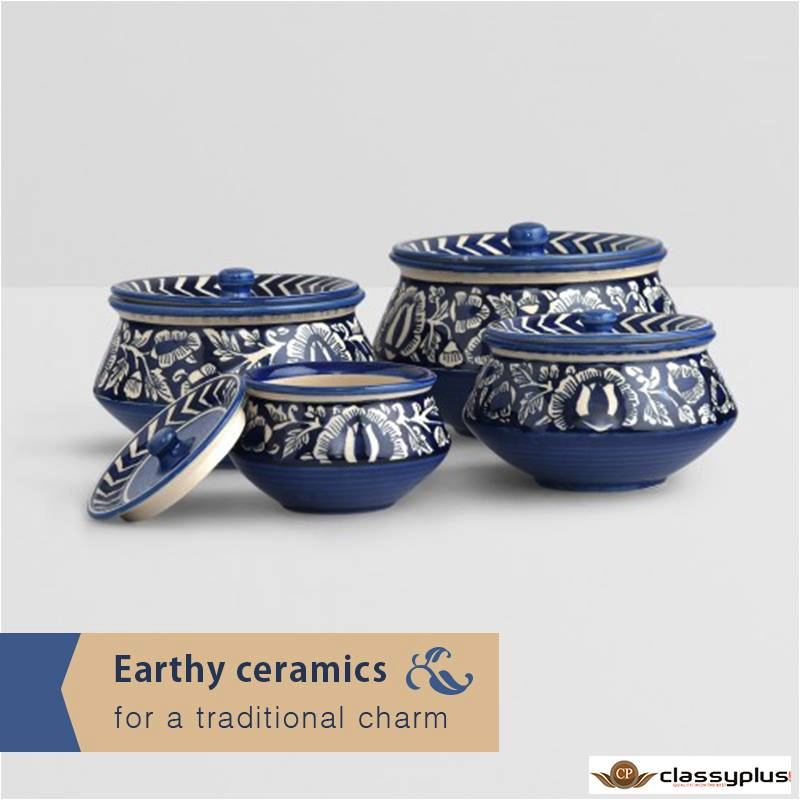We all have a hidden love for the handicrafts of India. It is the way to understand the roots of our ancient time and culture. Among all, Jaipur state has the most appreciable range of such treasure. We all know that Jaipur is well-recognized for its scenic views, historical monuments, mouth-watering dishes and obviously various forms of potteries. The Jaipur Blue Pottery is famous worldwide for its unique look and unmatched quality.
Unknown Facts About Jaipur Blue Pottery
We all have heard about the Jaipur and its signature pottery form, ‘Jaipur Blue Pottery’. Still, there are less identified facts about ‘The Blue Pottery of Jaipur’ you have to know. These facts are:
- Not an Indian Pottery art form: As the name suggests, it is an Indian pottery form. But, the reality is quite different from the fact. Originally, Blue Pottery is a Turko-Persian art form of pottery. It was the conspiracy of two different civilizations due to which this fine art arrived south to India. First were the Mongols who, as it is alleged, shaped this art form. They actually used Persian arts along with Chinese glazing methods to make what we today known as Blue Pottery. Then the Mughals transported this art form along with them when they attacked India.
- No use of clay: Everyone feels that pottery is all about clay. But, this form has something different. It is the only form of pottery that doesn’t have a use of clay as one of its important elements. The key elements of this art form include glass, ground quartz stone, Multani Mitti, few chemicals and borax. There is a combo of composite procedures implicated in the creation that engross a lot of proficiency.
- Reflection of ancestors: In its early years, Blue Pottery combined with tile production, as then accomplished by the Mongols and the Turks. The tiles, thus shaped were used in the interior of the mosques, tombs and other major creations in Central Asia as ornamental garnishing. Afterward, the Mughals started using them in India and gradually the method established position in pottery, no longer left behind just an architectural accomplice.
- Use of Cobalt and Copper Oxide: Most of the potteries use paints and dyes while this form uses several chemical composites such as copper oxide (for green color) and cobalt oxide (for blue color). Most of the products of this art form have white, blue and green color, but now more colors are included gradually with it. Although, yellow, pink and brown are the latest non-conventional color shades added in this art form.
- Searching its own home: Firstly, this art form had got his home in Kashmir, where the Mughals grew this exceptional art form. After that, it was transported southwards to Delhi by traveling craftsmen. In the 19th century, this shiny blue practice came to Jaipur as an outcome of the hard work of the great Sawai Ram Singh II, who sent craftsmen to Delhi to be trained in this art form. It was there where this art form developed and prospered. But, ironically in the 19th century, it had all but gone from Jaipur.
Blue pottery Delhi is available at many leading stores. This masterpiece is quite enough to make your space beautiful and attractive. It is an accurate reflector of Indian art work and originality.
